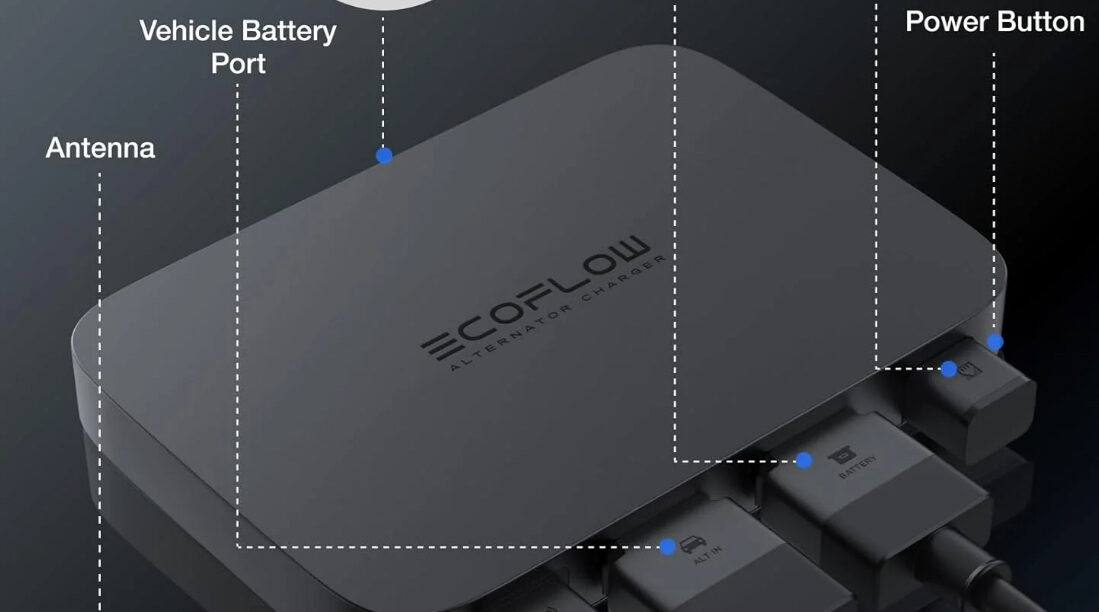Sign up for CleanTechnica’s Weekly Substack for Zach and Scott’s in-depth analyses and high level summaries, sign up for our daily newsletter, and/or follow us on Google News!
Power stations are one of the best things clean technology has given to outdoor recreation. Sure, it’s been possible to build your own solar power plant in a truck or RV for decades now, but the average person just isn’t going to wire up a bunch of deep cycle batteries to a solar charge controller, inverter, and some kind of management mechanism (even if just a voltage meter).
In other words, being able to buy a simple, all-in-one package you can carry along has put the power of the sun in the hands of many more people.
But, there’s one problem with solar generators: they can’t always keep up. Even if you spend days testing your camping or RV setup at home before heading out into the great outdoors, things are going to happen. Rain and clouds are a big one. Unanticipated power needs are another. There’s also the problem of mission/scope creep, where having those plugs in reach leads to the family wanting to plug more things in.
The obvious answer is to feed your power station with other forms of energy. A generator can pair well with a power station, allowing you to run the thing a lot less than you would if you were trying to power everything directly. It’s like a hybrid car, but for electricity instead of forward motion.
Another, even better, option is the “alternator chargers” more and more companies are offering now. Whether you’re driving an EV, a hybrid, or a gas vehicle, these devices can pull power directly from the vehicle’s 12-volt starter battery and use it to charge your power station when the sun isn’t keeping up. Some people, wanting to avoid the hassle of setting up portable solar panels, are just using this now.
The reason these are really great is that they’re several times faster than simply plugging the power station into the cigarette lighter plug. Getting the direct, higher amp connection to the vehicle’s power system means you can charge up a power station in hours instead of potentially days.
But, one big question people have had is this: will you damage your vehicle by putting this extra load onto a gas vehicle’s alternator or DC-DC charger in some hybrids or all EVs? This is an important thing to think about, as your vehicle’s manufacturer usually doesn’t plan on anything but running the vehicle’s systems.
Fortunately, I came across a video that gets into some real numbers on what an alternator charger does to a vehicle. (article continues after the video)
Rather than recap everything in the video, I’ll stick with two simple takeaways. First, at idle he was seeing that the vehicle’s alternator was at around half of capacity. Second, when at cruising speed, the alternator was using up about a quarter of the capacity (due to higher RPMs).
It’s generally not a good idea to overtax an alternator or a DC-DC charger in an EV. The less stress you can put on it, the better.
I’d have to say that a good rule of thumb would be to find the rating of the alternator or DC-DC charger and try to not extract more than about 25-30% of that capacity. For example, in a Chevy Bolt, the DC-DC charger is rated for about 1500 watts, so you wouldn’t want to pull more than about 400 watts from that system if you want to maximize longevity. My Chevy Suburban’s alternator is rated for 130 amps, which is about 1800 watts at 13.8 volts. For that system, keeping the charging load under about 500 watts would be good.
Why are these alternator chargers able to pull 800 or even 1000 watts? Because there are vehicles that can easily handle that. Diesel trucks and some EVs are rated for over 3,000 watts of output, s0 pulling 1,000 watts would be no big deal.
But, for those of us with a vehicle that can’t keep up with that kind of load, it makes sense to take it easy and avoid prematurely needing to replace an alternator, or worse an expensive EV inverter that a DC-DC charger is often built into.
Featured image by EcoFlow.


Whether you have solar power or not, please complete our latest solar power survey.

Have a tip for CleanTechnica? Want to advertise? Want to suggest a guest for our CleanTech Talk podcast? Contact us here.
Sign up for our daily newsletter for 15 new cleantech stories a day. Or sign up for our weekly one on top stories of the week if daily is too frequent.
CleanTechnica uses affiliate links. See our policy here.
CleanTechnica’s Comment Policy

